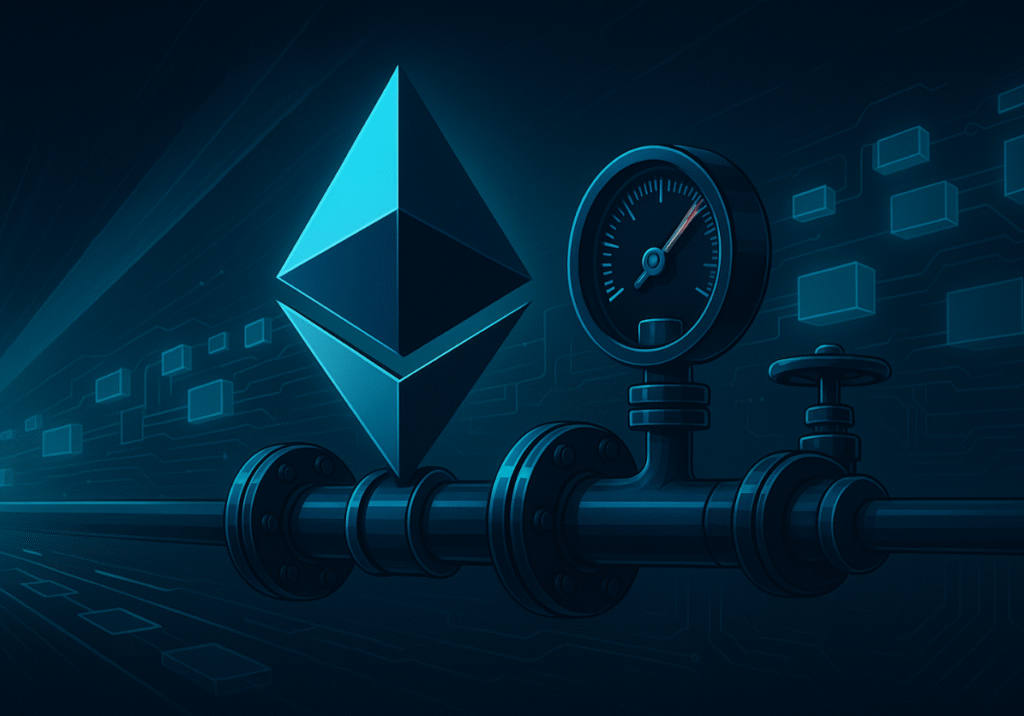In recent years, the Ethereum network has emerged as a pivotal force within the blockchain ecosystem, renowned for its versatile smart contract capabilities and a vibrant developer community. However, as it scales and evolves, addressing challenges such as transaction congestion and security continues to be paramount. One of the latest advancements in Ethereum’s journey towards optimized performance and enhanced security is the introduction of EIP-7825, a proposed protocol change that aims to streamline transaction processing and fortify the network against certain types of cyber threats. In the following sections, we delve into the implications and technicalities of this significant update.
Understanding Ethereum’s EIP-7825 and Its Impact on the Blockchain Network
The Ethereum Foundation has officially introduced a noteworthy change slated for the upcoming Fusaka hard fork. This update centers on a newly established protocol-level gas limit for individual transactions, formalized in EIP-7825. The cap is set at 16,777,216 units of gas or 2²⁴, marking the first time Ethereum enforces a per-transaction gas limit distinct from the block gas limit. This modification is already operational on the Holesky and Sepolia test networks and will be fully implemented on the mainnet with the activation of Fusaka.
In a detailed post dated October 21, Toni Wahrstätter elucidated the rationale behind this development, emphasizing that this gas cap aims to mitigate potential Denial-of-Service (DoS) attack vectors. By preventing a single, excessively large transaction from monopolizing an entire block, the network’s stability and predictability of block filling can be significantly improved. This change is crucial as Ethereum prepares for parallel execution, a key component of its scalability roadmap.
Balancing Transaction Complexity with System Throughput
The implementation of EIP-7825 underscores a deliberate move towards managing transaction complexities while enhancing systemic throughput. Historically, some transactions consumed the vast majority of a block’s gas—approaching upwards of 45 million units—posing challenges in timing and planning for both block builders and validators. Now, transactions exceeding the 16.78 million gas threshold must be separated into smaller, sequential operations.
While this adjustment primarily targets complex contracts and specialized routers, the Ethereum Foundation assures that the average user experience will remain unaffected, as most transactions typically fall beneath this new limit.
Implications for Ethereum Users and the Network
From a development and scalability perspective, the introduction of this transaction gas limit paves the way for future advancements. It’s closely tied to projects like EIP-7928, anticipated in the “Glamsterdam” phase, where predictable and constrained transactions are essential for efficient execution concurrency.
With a cap in place, even under extreme mempool conditions, multiple independent transactions can be processed within a block, reducing congestion scenarios and simplifying the planning for block constructors who are experimenting with parallel execution paths.
Technical Insights into EIP-7825
The premise of EIP-7825 is straightforward: “Limiting each transaction to 16,777,216 (2²⁴) gas improves defense against specific DoS attack vectors and aids in making transaction processing more predictable as block limits evolve.” This clarity has resonated within the core developer community, promoting the EIP’s popularity thanks to its concise yet effective design, compatible with forthcoming scalability upgrades.
Conversations around the encoding and communication of this limit have persisted for months, engaging forums like Ethereum Magicians and the AllCoreDevs calls. Central to these discussions was aligning block gas targets to multiples of 2²⁴, ensuring builders can consistently include a guaranteed number of transactions if the mempool supports them—a matter more about predictability than sheer throughput.
Developer Considerations and Implementation
Major Ethereum clients, including Geth, Erigon, Reth, Nethermind, and Besu, have integrated this change into their Fusaka-compatible versions, minimizing risks of client divergence upon activation.
While eth_call computations remain unaffected, transactions pre-signed above the limit will require re-signing with a lower gas value. Developers can follow a streamlined upgrade path by:
- Testing on Holesky or Sepolia,
- Optimizing batch operations,
- Updating gas estimation logic and alerts to quickly identify and rectify potential limit breaches.
Strategic and Philosophical Context
Ethereum’s historical approach has favored minimal and general constraints, leaving complexity management to higher protocol layers. EIP-7825 adheres to this philosophy, setting a protective upper bound that safeguards network viability while preparing for a multi-threaded future.
This limit remains outside fee market dynamics, leaving blob economics and block targets of other EIPs untouched. As the Foundation aptly summarizes, “This limit establishes a more secure and predictable foundation for greater throughput in future updates.” A minor technical shift, yet a strategic leap towards executing layer scalability.
FAQs on Ethereum’s EIP-7825
What is EIP-7825?
EIP-7825 is a proposal to limit the gas usage per Ethereum transaction to 16,777,216 units, aimed at enhancing network security against potential large transaction-based attacks and improving overall transaction predictability.
How will the transaction gas limit affect average Ethereum users?
Most users will see no change, as typical transactions naturally fall below this threshold. The limit primarily impacts complex smart contracts and specialized deployment scripts.
Does EIP-7825 change how Ethereum’s fee market operates?
No, EIP-7825 focuses solely on transaction gas limits and does not directly influence the fee market or associated economic dynamics.
How should developers prepare for this update?
Developers should test their applications on the Holesky or Sepolia test networks, optimize batch operations, and update gas estimation logic to accommodate the new gas cap efficiently.

